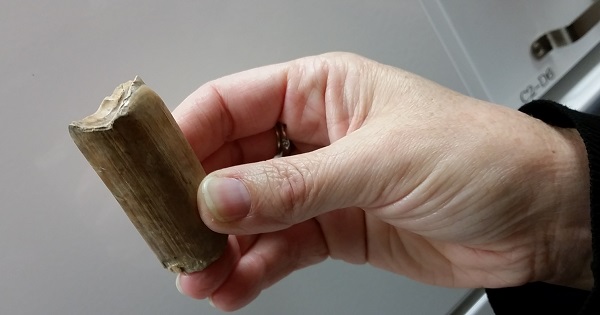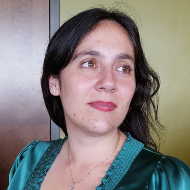Let’s take another look at last week’s fossil, just to remind ourselves what we're dealing with.

What is it? It’s a tooth! What kind of a tooth? A GIANT SLOTH TOOTH!!!
Okay, I was very excited to finally give you all something that was actually from a giant sloth. I know you all love giant sloths. How can you not love giant sloths? Here’s a picture of Rusty, the giant sloth who lives at the UIowa Natural History museum.

As you can see, he’s adorable. It’s too bad these guys are no longer extant because they look like they would give great rides. But a few facts: The giant sloths went extinct not so very long ago. The proper name for this particular species is Megalonyx jeffersonii. These sloths lived all throughout North America from a bit more than ten million years ago to a frankly suspicious 11,000 years ago. What happened to them? It’s not completely certain, but most evidence supports the contention that they were too delicious for their own good.
Our molar this week is one of many sloth parts in the museum collections from the Tarkio Valley ground sloths. Found in 2001 in Northboro, Iowa by Bob and Sonia Athen after the creek on their property suffered from serious flooding in 1993, the Tarkio Valley sloths represent an interesting group of fossils. Specimens from an adult, a juvenile, and a baby sloth were all found together. Research teams are working now to discover if these sloths were indeed a family group. Check out some more information here; UIowa’s got all the sloth-related resources you could desire!
The winner this week? Dan Coleman again! Dan, you have won too many times in a row! We all stand in awe of your fossil identification skills, and I ask as a personal favor that next time you submit a plausible yet deliberately incorrect response. Let someone else have a shot at the glory!
If you have a fossil you want to share, send your pictures to me at schoerning at ncse.com.

